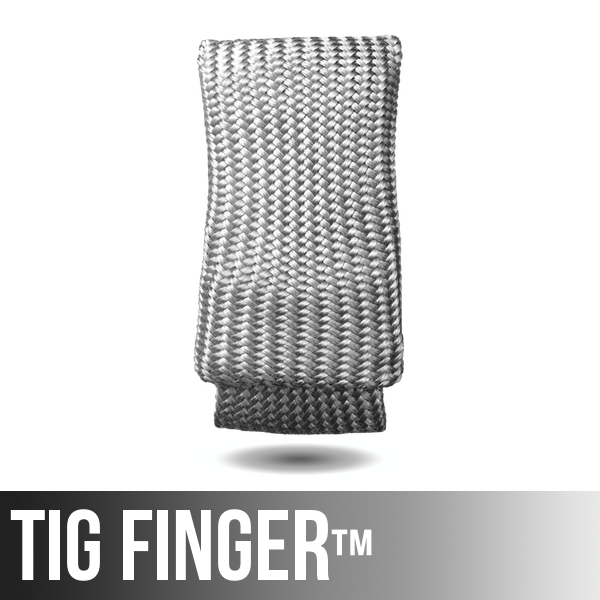Video Transcript:
2 Practical Examples for AC TIG Settings
This is gonna be a really quick video. I’m just trying to add to the conversation from the previous video about AC frequency.
So in the previous video, I got this piece of eight inch tubing, 070 wall, that’s not quite 2 millimeters. Put some lines on it, put it in a positioner. Propped my hand on a stand. And once I got the travel speed kind of figured out, where I keep it all the same, try to get me out of the equation, then I experimented using 50 Hz. That was this right here, how it was penetrating all the way through with no problem. And then I didn’t change anything, and increase the frequency to 250 Hz. No penetration. Got a narrower bead and a higher-pitched sound, but that’s about it.
So the lower frequencies, and this is gonna be around 50 Hz for the first one. The lower frequencies give you more heat input and a wider arc cone, and I’m gonna run a bead around the edge of that square tubing right there, it’s 250 wall thickness, at about 100 amps, 50 Hz. And the reason 50 Hz is gonna work good is I want a wide bead. I want the toes of the well to completely wrap around the corners. This would be like a buildup project, like if somebody mis-machined this part, took off an extra 30,000s and you wanted to build it back and turn it back down, or something like that.
It’s also really good practice, putting a piece like this up in a turntable of aluminum really gets that filler wire hand up to speed. And that’s always the hand that kind of limits you, it seems like, especially when welding aluminum, just because you feed so much rod. And depending on what size rod you’re using, too, you know. But this is a 332, 2.4 millimeter rod. I could probably have gone up to an eight there, no problem. But really good practice feeding that 332 rod.
You can run bead after bead after bead after bead on something like this and never have to even stop and clean anything. Just give it a minute to cool every couple of beads, and then keep going. It’s a very efficient practice.
And even though the torch hand is propped, so there’s not a whole lot of practice in moving the torch or manipulating the torch, it’s still watching a puddle and still feeding wire, intentionally trying to slip that wire into the right area of the puddle, and you still gotta hold your arc length right.
Great, great practice. And it’s cheap practice.
Alright, we’re gonna switch over now and do an application where maybe higher frequency would be beneficial. There are some TIG inverter machines out there where the AC frequency is fixed, and it’s usually fixed at around 120 Hz, when that’s the case. That’s because it’s a good all-around setting. Here I’ve got it set around 110 Hz, for an outside corner joint, an 063 material. This’d be just as good for 040, one millimeter, you know. It’s a good setting for thin aluminum with a sharpened tip.
Sharpened tip really helps you get a nice, crisp, good arc start at a low amperage.
I’m using 100 Hz here, and you can watch the toes of that well just barely wrap and melt the corners.
You want them to melt the corners a little bit, because otherwise you won’t get any penetration on the backside if you just run a cold bead down there, and sometimes on an outside corner, the weld is finished off. And if that’s the case and you don’t get any penetration, you’ve got hardly anything there to work with. You got hardly anything left after it’s sanded off. So you want to get some penetration, you also want to get just a little bit of height to the bead, and the way to do it is by letting that puddle kind of wrap around those corners a little bit. And that’s probably around 80 to 90 amps there.
The actual amperage needed will vary depending on whether you’ve got a chill factor or not. I welded this against a piece of packing, so without backing, probably maybe 70 amps would’ve been plenty.
But quick summary here. You get more heat input out of a lower frequencies with a wider arc cone, which is good sometimes for buildup work or for outside corner joints on thicker materials. And the higher frequencies seem to work well on thinner materials, and about 110 Hz is a good all-around setting. That’s an oversimplified approach to AC frequency applications, but I think it’s a good starting point.
Thanks for watching. See you next time.







September 19, 2017 at 11:18 AM
Very good job!